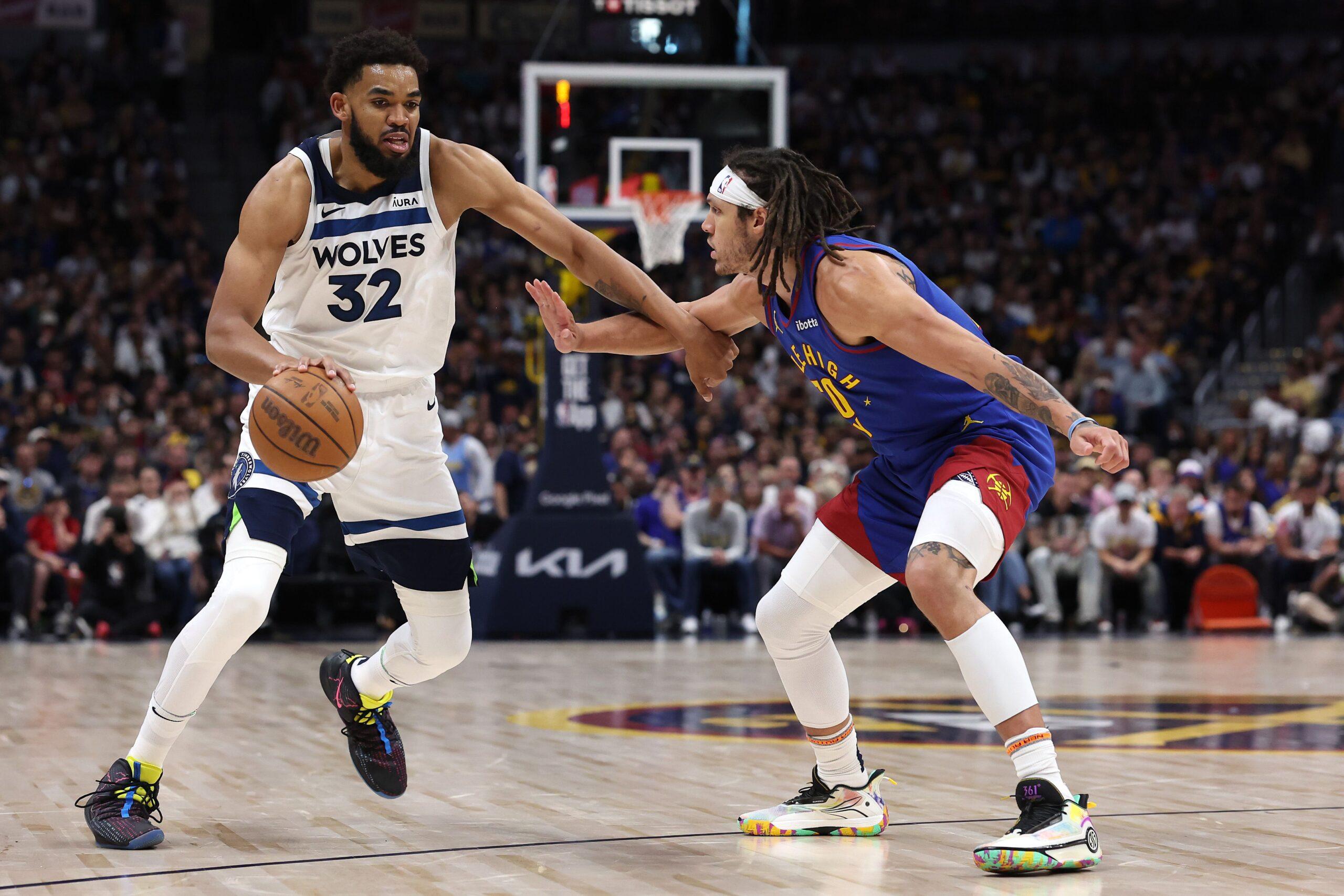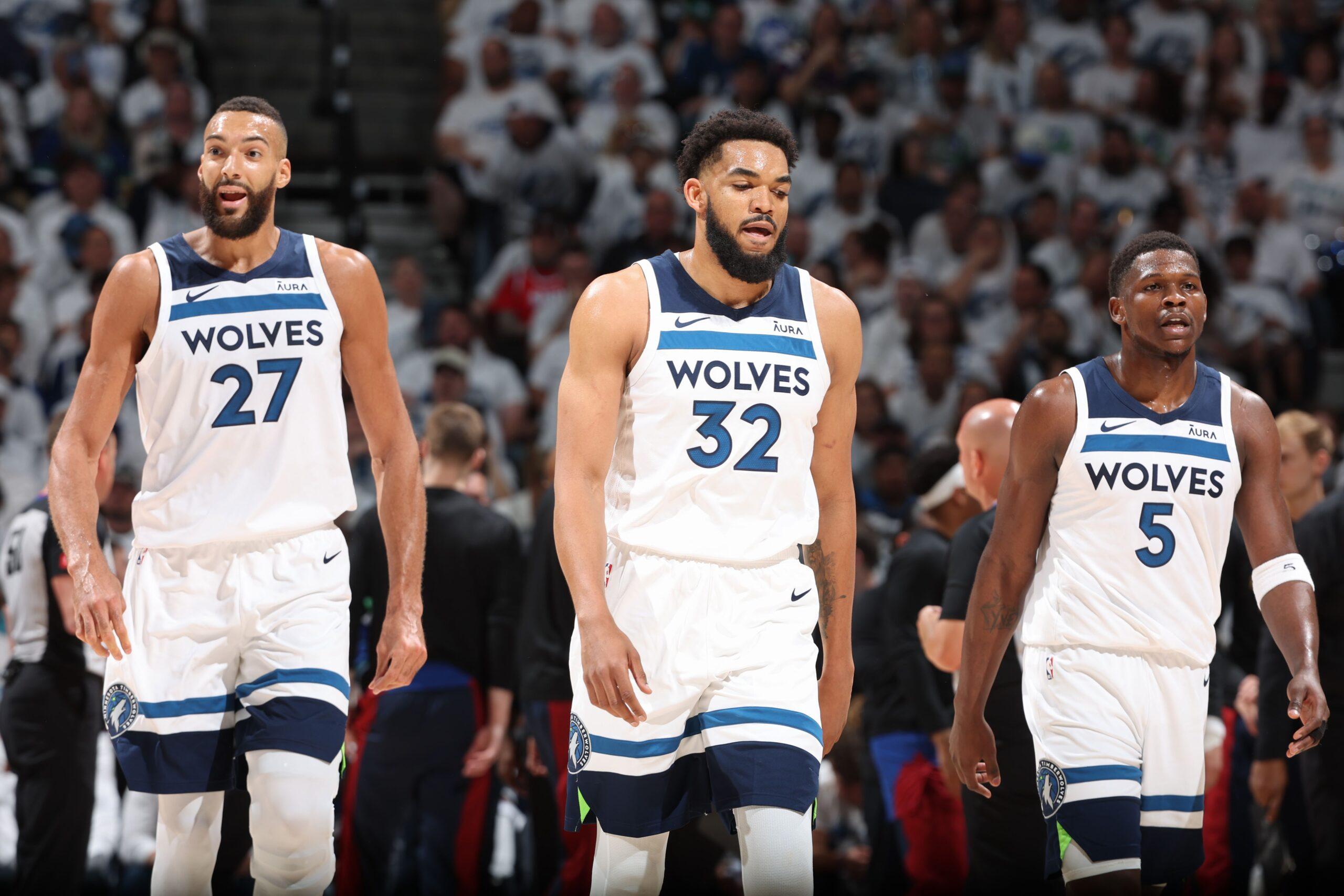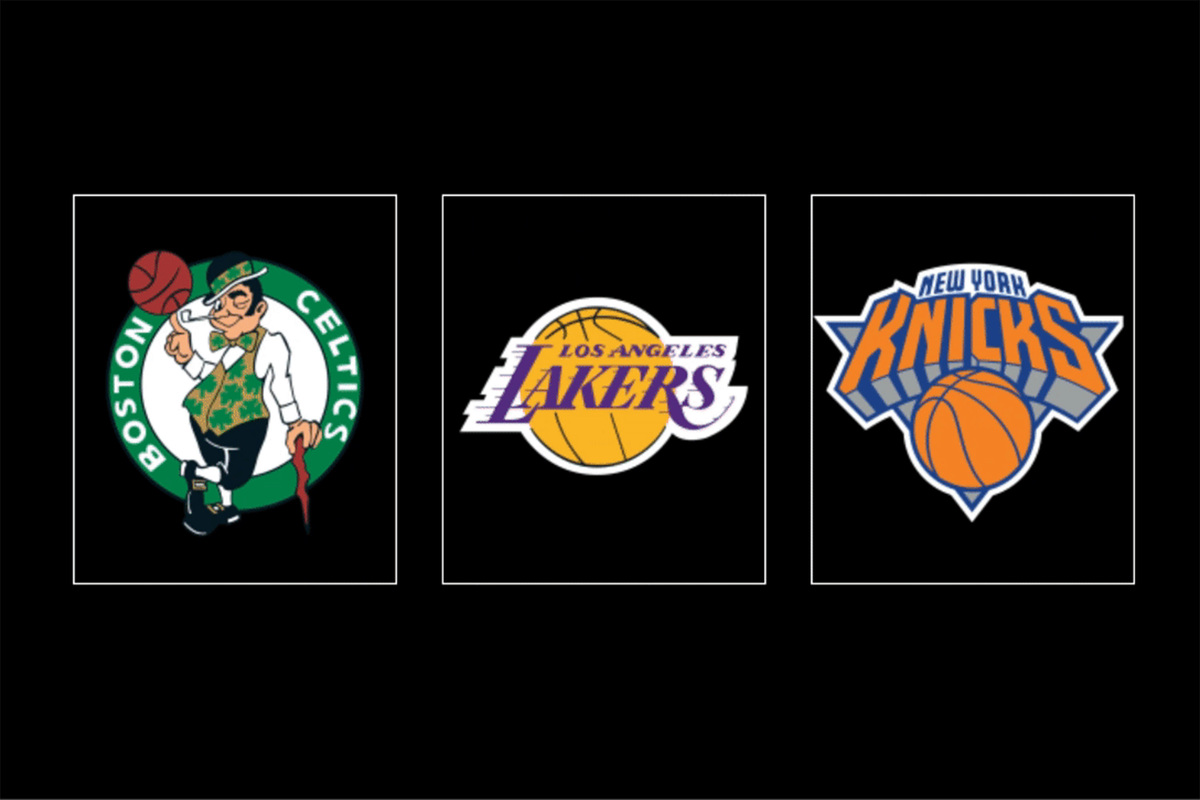The Metamorphosis of Karl-Anthony Towns
By foregrounding Rudy Gobert and Anthony Edwards, the Minnesota Timberwolves made a massive bet on Towns’s willingness and ability to alter his game—and it paid off. But now, on the brink of elimination against the Denver Nuggets, the Wolves need KAT to maintain the healthy balance that carried him through the most impressive season of his career.In by far the longest playoff run of Karl-Anthony Towns’s career, he’s been a highly efficient, mismatch-obliterating nightmare who’s impacted winning in myriad ways—and also a hasty tableau of aggravation, unable to curb his penchant for exasperating fouls, wild drives, and head-scratching turnovers at the worst possible times.
Not even two months after Towns had surgery to repair a torn meniscus in his left knee, he had an excellent 28-point effort in a closeout win against the Phoenix Suns and built on it with one of the most impressive two-way efforts of his life: a 27-point, 12-rebound masterpiece (sans Rudy Gobert) in Game 2 against the Denver Nuggets. Offsetting that dominance, though, are the times when it has seemed like the only player on earth who can neutralize KAT is … himself. In a pivotal Game 4 against the Nuggets, he went 1-for-10 in the first half and needed 18 shots to score 13 points.
As Denver and Minnesota scrap over a ticket to the conference finals, it’s easy to minimize or even ignore the necessary concessions Towns has made to help Minnesota get where it hasn’t been in 20 years. To beat the Nuggets in Game 6, the Wolves will need him to balance the aggression, composure, and proficiency that carried him through what, in some ways, was the most impressive season of his career.
Last Friday night, Timberwolves head coach Chris Finch was asked to compare Towns’s current responsibilities to those he had a couple of years ago. The answer was long and complimentary, and it can be summed up with its opening sentence: “Nobody’s made more sacrifices individually to their game and their role than KAT has.”
Towns is a 28-year-old four-time All-Star, smack in the middle of his prime. That type of status typically affords certain perks and privileges—those players are rarely asked to change their positions or surrender their standings within a franchise to their much younger teammates. But to reach a higher level of team success than he’s known since getting drafted nine years ago, Towns has tapered his skill set on offense and broadened it on the other end. When asked to describe his sacrifice, Towns generalizes and deflects. But his mostly serene metamorphosis has turned him into one of the league’s most overqualified and underappreciated figures while helping this Timberwolves team finally reach its full potential.
“Doing whatever it takes for this team to win, whenever my name is called offensively and defensively, I’ve answered the call and wanted to be the best version of myself for our team,” Towns tells The Ringer. “I’ve done it since I came into the league. It’s something I did in college. I sacrificed at a high level and found the reward of being the no. 1 pick and being in this beautiful city because of it. I’ve just done it my whole career and will just continue to do it as long as it helps this organization win games.”

Towns’s transformation isn’t entirely unprecedented in NBA history, but it’s rare. He entered the league as a futuristic prodigy, a first pick who was projected to one day be the top option on a championship contender. His offense was multipronged and prescient. The Golden State Warriors had won their first title a few weeks before he was drafted, ushering in a 3-point revolution that seemed tailor-made for Towns’s skill set.
A big man who could effortlessly drill outside shots in various situations—curling off screens, trailing in transition, spotting up above the break, picking and popping—and do work on the block with an array of glossy post moves? Say no more. Towns was the whole package; his future had no ceiling. After he won Rookie of the Year, NBA general managers voted Towns as the one player they’d most like to build around. After a sophomore season during which he averaged 25.1 points and 12.3 rebounds, they did it again.
By his third season, Towns was an All-Star on a team that decided to accelerate its timeline (not unlike his current squad). Tom Thibodeau, entrenched as head coach and president of basketball operations, traded for 28-year-old Jimmy Butler. But Minnesota was eliminated in the first round by the Houston Rockets, and that relationship infamously imploded and ended the following November.
Back to square one. Towns spent the next two years enduring physical injuries and immense personal tragedy on teams that didn’t come close to making the playoffs. He bounced back the following year, in a 2021-22 season in which he made third-team All-NBA. In Finch’s first full year as head coach, Minnesota’s system revolved around Towns, who led the team in usage, PER, and points per game, spearheading an attack that was wildly successful with him on the floor. Those Timberwolves made the playoffs for just the second time in 18 seasons and battled in a first-round series against a favored Memphis Grizzlies team that had to immediately pivot away from its own starting five because of all the matchup issues Towns created.
Two years later, Towns starts at power forward alongside Gobert (the Defensive Player of the Year) and Anthony Edwards (an ascending 2-guard who inspires realistic comparisons to ascending versions of Michael Jordan and Kobe Bryant). Towns was once again named an All-Star, but he made it as the second option on a top team that had triumphantly assumed a defense-first identity.
Not every team would’ve gone this route. With president of basketball operations Tim Connelly at the head of a new front office, the Timberwolves had other options. They could’ve made incremental tweaks around the margins while hoping organic growth and chemistry between Towns and Edwards would yield playoff success. They could’ve traded Towns for future assets and built a long-term foundation around Edwards. Instead, coming off a competitive first-round loss to the Grizzlies, they made a massive bet on their star center’s willingness and ability to alter his game.
“When we brought Rudy in here, KAT was coming off an All-NBA season,” Finch said. “It’s not often you ask your All-NBA player to accommodate others as they come in, but he was one of the first to form a fast chemistry with Rudy.” (From 2022 to 2024, no player made a larger leap in the percentage of their minutes played at power forward than Towns, per BBall Index.)
There was no guarantee the Wolves’ two-center gambit would work, especially when it came time to score. But Minnesota’s offensive rating this season when Towns and Gobert shared the court was an excellent 118. In the playoffs, it’s a sizzling 120, which could be the single most encouraging number Minnesota can point to right now. (Towns assisted Gobert 19 more times than Edwards did this season.)
In their new configuration, Towns is a critical part of the Wolves offense, but not in a way that depends on him to score a ton or even be involved in every set. He is no longer a heavy post-up player or go-to option in crunch time. In 2019, Towns led the entire league with 12.9 post-ups per game, according to NBA.com. This year, he was down to a career-low 2.9. His frontcourt touches dropped to their lowest mark since his rookie year, too.
By nature, growth is uncomfortable, but Towns accepted his situation while still producing the occasional scoring outburst. After a 25-shot, 40-point performance against the Pacers in December, Towns referred to himself as “not the sun, but one of the planets.”
About his adjustment, Towns tells The Ringer: “It’s honestly not that challenging when you’ve got people like we have here in this locker room and they’re playing that well. And also when you have that cohesiveness and everyone has that continuity and that love for each other.”
Instead of having every possession funnel through him in one way or another, Towns will go entire trips without touching the ball, leveraging his gravity along the perimeter. (Overall, his 64.0 true shooting percentage is one of the highest in this postseason, and his effective field goal percentage on catch-and-shoot tries ranks first among those who’ve launched at least 30 spot-up jumpers.)
Despite also getting a much smaller portion of his shots at the basket (with the lowest dunk frequency of his career), Towns has adapted without seeing any real drop in efficiency. He averaged a career-high 9.5 drives per game this season—up significantly from 3.6 back in 2019—which speaks to how diversified his skill set is in an offense that needed more playmaking from that spot than a standard stretch big usually offers.
“We knew [trading for Gobert] would change slightly the rhythm at which he plays. He’s gotten comfortable with that,” Finch said. “He now understands he can have these runs in the game without having to touch the ball every single time down.”
But an even more complicated evolution had to take place on defense. Towns’s flaws on that end were what precipitated Minnesota’s blockbuster trade for Gobert in the first place. The adjustment he had to make was far from simple, in a league filled with perimeter-oriented threats who populate his new position. At worst, Towns has competed hard enough to withstand most nightly assignments. At best, he’s been a revelation.
“Where he’s really, really bought in and accepted the challenge is defensively,” Finch said. “You have so many different types of players to guard at the 4 position. He’s gone most of his life guarding in pick-and-roll. Now he has to guard in actions, now he has to guard in rotations, now he has to do other things.”
Towns is 7 feet tall and, like most 7-footers, is understandably at ease in the paint, fighting for rebounds and doing battle in cramped quarters. Minnesota’s coaching staff doesn’t want Towns to dance on the perimeter as a wing might but to help out around the basket and close out to shooters if/when his man drifts behind the arc. It’s an ambitious task but one that Towns has handled well enough to be a clear plus on that side of the ball, where the Timberwolves did a great job all year limiting 3s and shots at the rim. “His ability to adjust and embrace that has been everything to what we’re doing now,” Finch said.
According to Synergy Sports, 23.6 percent of possessions that involved Towns on defense this season ended in a catch-and-shoot or catch-and-drive situation. That percentage was only 11.4 in 2021, an example of how his function shifted. In pretty much every other season of his career, the Wolves were bad on defense with Towns at the 5. This year, they were elite whether he was beside Gobert or anchoring Minnesota’s defense alongside Naz Reid.
“I think that’s the biggest thing that I’ve been able to notice about him, just the willingness on the defensive side,” Reid said. “I think he’s been very, very, very, very good for us.”
In these playoffs, Towns’s two primary matchups have been Kevin Durant and Nikola Jokic. Not easy! Towns still commits frustrating fouls, but he doesn’t get enough credit for playing angles, defending with his feet, and letting his massive frame do the work for him.
“The day I got traded here, I knew that was one of the main goals of mine, to challenge KAT to be even more of a winning player,” Gobert said earlier this season. “And he took that challenge.”
It’s unusual, if not awkward, for a no. 1 pick to stay with one team after seven mostly disappointing years, especially after another no. 1 pick is made. Every franchise has room for only one franchise player, after all. But Towns has relinquished his status with a deft hand, accepting Edwards’s rise with enough humility to preserve what’s always been an ideal on-court relationship.
After the Wolves were knocked out of last year’s playoffs, Towns reflected on his partnership with Ant. “I want [Edwards] to grow as a player and everything,” he said. “Just having to sacrifice shots and make sure I get him the ball a little more so we can kinda even out the shot totals.”
The respect is a two-way street. After Towns’s worst game of the playoffs on Sunday night, Edwards was effusive: “I mean, he’s a superstar. He gets paid to put the ball in the rim. I always tell him, ‘Don’t you ever stop shooting the ball because you miss five or six shots. I don’t give a damn. In order for us to win, we need you to score.’ I’m just happy he was aggressive the entire night. That’s a win for us.”

Two days later, in a disappointing Game 5 loss, Towns bounced back in a major way. Battling foul trouble and clear knee pain, he scored 23 points and generated a handful of wide-open 3s for teammates when Denver doubled him in the post. Towns’s passing was a salve; he ran several successful 4-5 pick-and-rolls with Gobert and committed only two turnovers. Minnesota can win the next two games if Towns does exactly that while Edwards (who suffered through his worst game of the playoffs) returns to his world-beating form.
Regardless of how Minnesota’s season ends, the past six months, in this role, on this roster, have felt like Towns’s basketball destiny. Tremendous talent aside, it’s more than fair to say that the days of believing Towns would be the undisputed leader of a champion are long gone. And that’s OK. Life is incredibly hard for any big man in today’s game who wants to win at the highest level without a star guard by his side—a rule that applies to Jokic and Joel Embiid.
In Edwards, Towns has someone who can take over a game without assistance or permission. In Gobert, he has literally the most accomplished and effective rim protector alive.
As for Towns himself, he’s found that less can be more on a team that accentuates his strengths and conceals his weaknesses; the work he’s done to fit inside a winning ecosystem deserves applause. Not every star could do that, and most would flat-out refuse.



